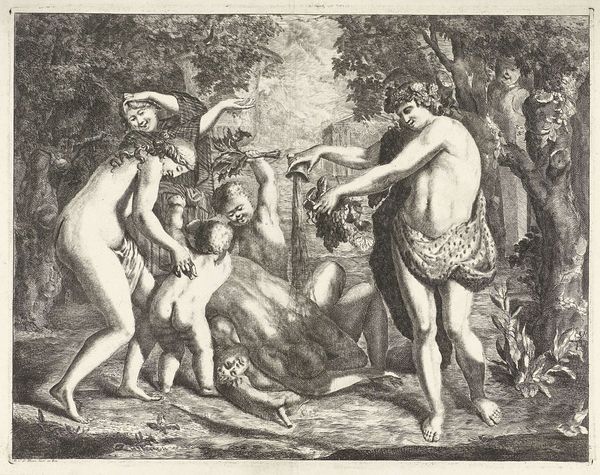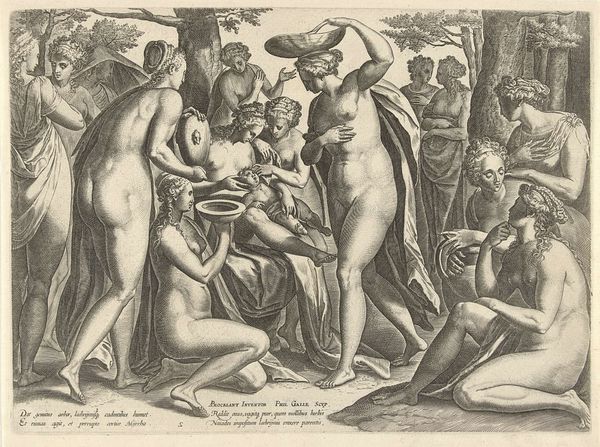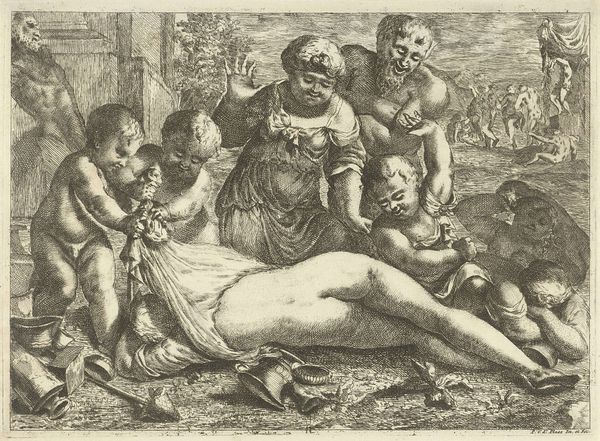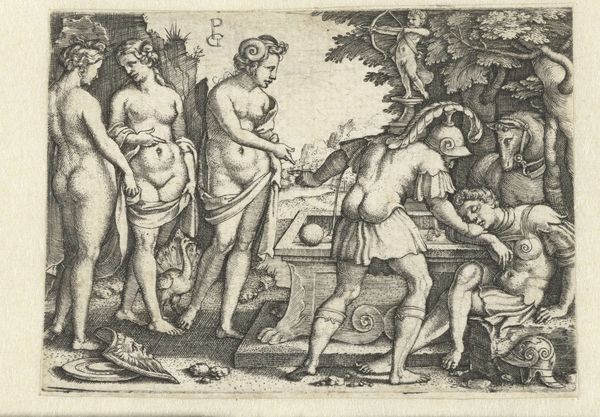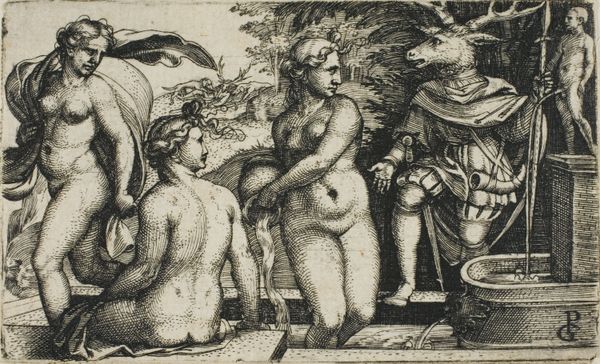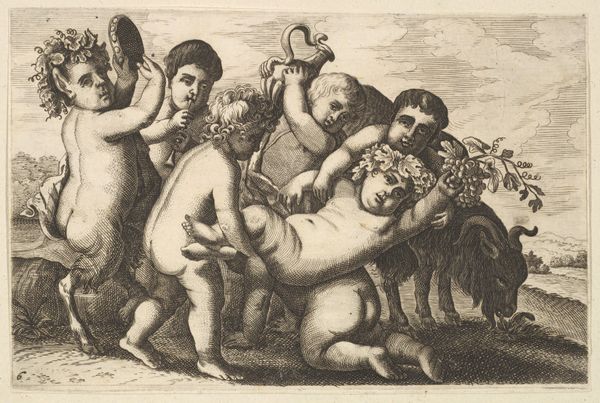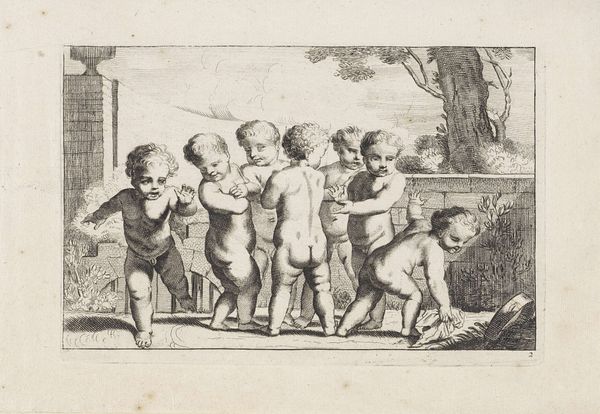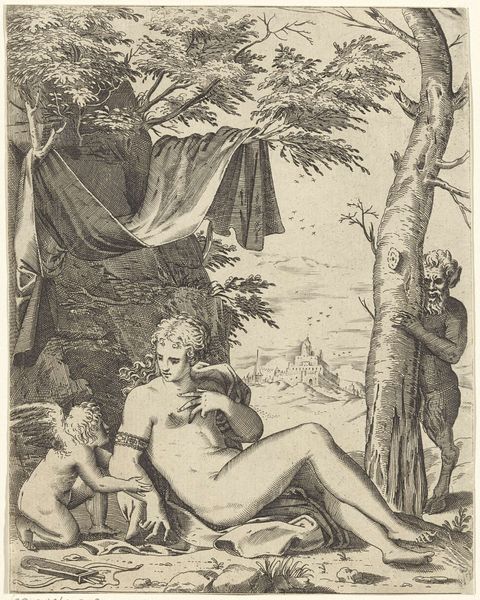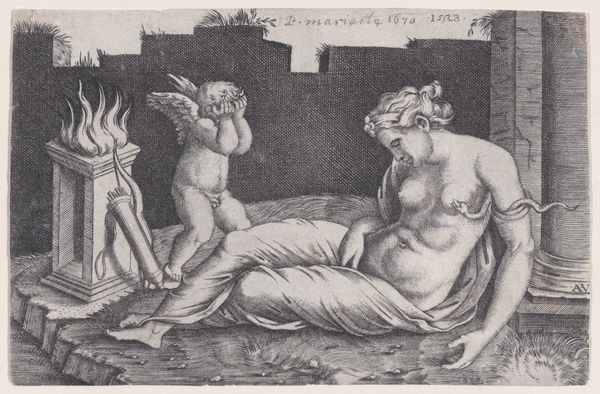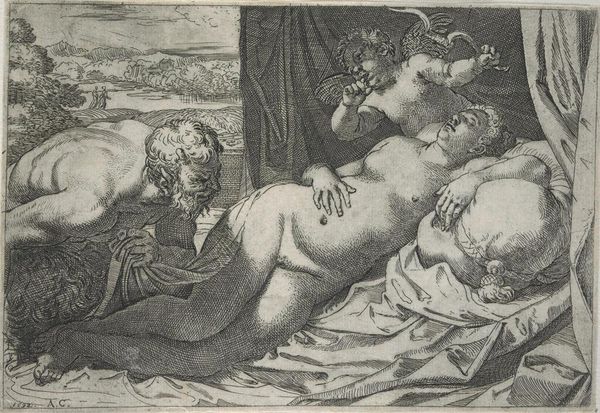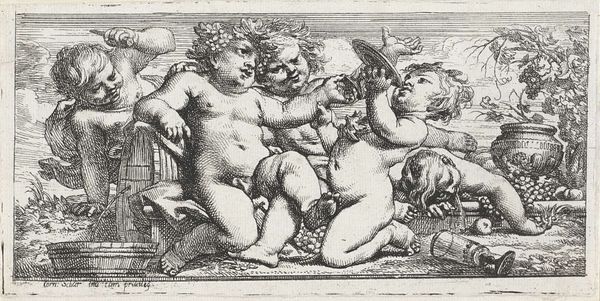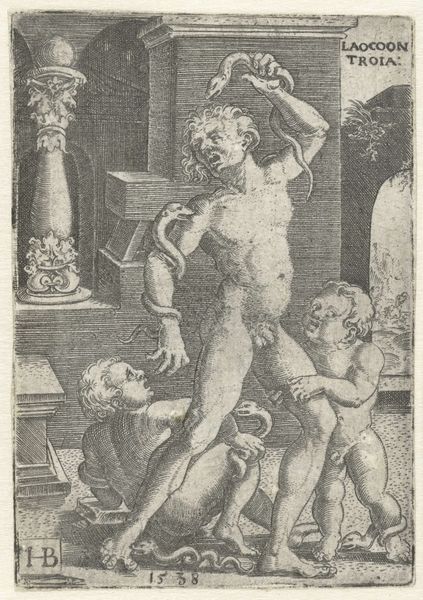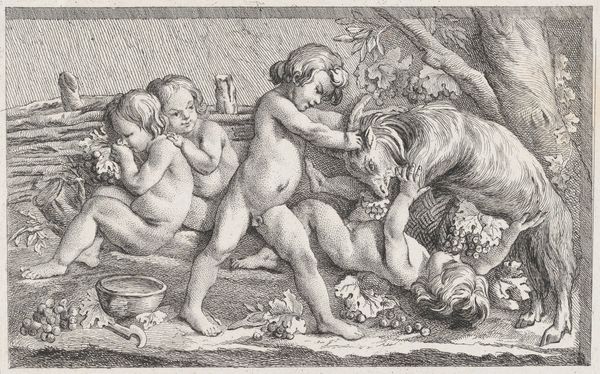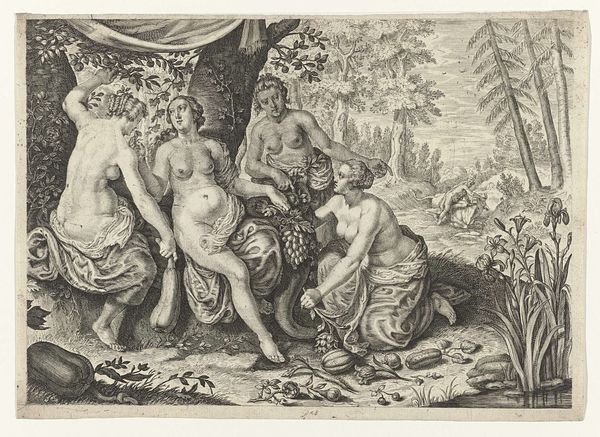
engraving
#
baroque
#
landscape
#
figuration
#
history-painting
#
nude
#
engraving
Dimensions: height 191 mm, width 261 mm
Copyright: Rijks Museum: Open Domain
Curator: Look at the stark interplay of light and shadow! It's quite engaging from a compositional point of view. Editor: And dense, too! There is a lot going on materially. I'm curious about the engraving process used to produce so much intricate detail. Curator: We're looking at "Landscape with Bacchantes and Putti," crafted somewhere between 1687 and 1708 by Pieter van der Plas the Younger. He clearly masters the use of line in creating depth, drawing the eye into the receding landscape. Editor: Absolutely. This medium inherently lends itself to broad dissemination, reaching wide audiences with imagery centered around themes like classical revelry and even explicit nudes. How did these printed images of pleasure and excess shape perceptions of the good life and taste among their consumers? Curator: The artist's use of perspective, the architectural elements juxtaposed with the free-flowing organic shapes of the figures, it establishes a dialectic tension. These baroque strategies invite the viewer's mind to navigate this landscape, intellectually as much as visually. Editor: Do we know anything about the kind of labor invested in these engravings, like the artist's shop or social relations that underpinned the production? I wonder who would've been involved and if this print indicates the commodification of classically inspired scenes. Curator: Undoubtedly. Consider the contrast between the serene maternal figure and the frenetic energy of the putti in the foreground; the symbolic meaning is multifold and allows interpretations concerning classical values versus their contemporary interpretations. Editor: The scale suggests it would've been accessible and transportable. Considering the volume, it likely played a crucial role in the era’s visual culture, even if its impact seems far removed from traditional academic paintings. Curator: Precisely! It shows how traditional formal structures were evolving with contemporary life! Editor: Definitely an example of how looking closely at the production aspects encourages a broader conversation beyond just the imagery. Thank you!
Comments
No comments
Be the first to comment and join the conversation on the ultimate creative platform.
